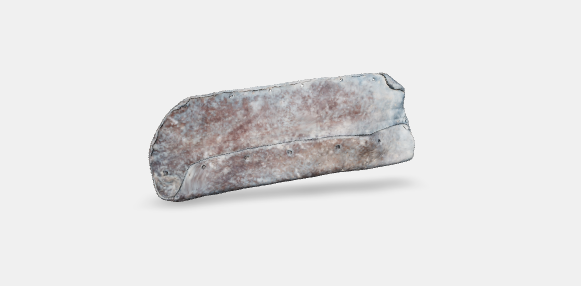A rectangular slab folded over on itself. One of the angles has a prominently curved profile. The two long sides have 12 holes arranged in a row: it seems they contained square-section nails. On the folded over side, light grooves cross the slab horizontally. The edges are riveted.
It could be interpreted as a patch used during the repair of the external coating of the quickworks of a large vessel during the XVI-XVII centuries A.D. (1).
The artefact does not present signs of biological colonisation.
MEDAGLIA 2002, pp. 168-170
1 Usually the lead plates used for repairing the hull in ancient times were smaller. The use of this slab may be collocated in a later period. Between the XVI and the end of the XVII century, lead was also used on sailing ships. See GIANFROTTA, POMEY 1981, pp. 258 and ff..; KAHANOV 1994. RITTMEYER 1907, passim.
REFERENCES
Gianfrotta P.A., Pomey P. 1981, Archeologia Subacquea. Storia, tecniche, scoperte e relitti, Milano.
Kahanov Y. 1994, Sheathing and caulking of ancient ships in the Mediterranean from the 6th Century BCE to the 5th Century CE, in Center of Maritimes Studies News, Haifa
Medaglia S. 2002, Materiali erratici dal mare di Kaulonia, in Archeologia Subacquea, Studi Ricerche, Documenti, III, pp. 163-185.
Rittmeyer R. 1907, Seekriege und Seekriegswesen in ihrer weltgeschichtlichen Entwicklung, Berlin, 1907.



